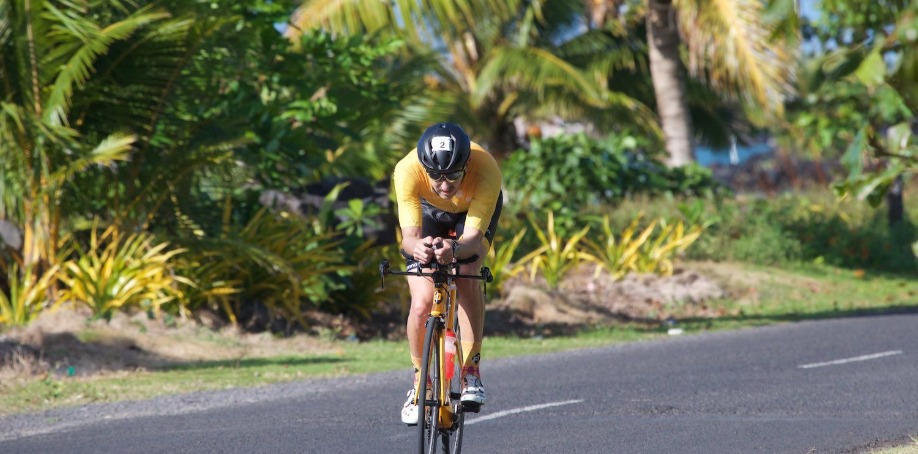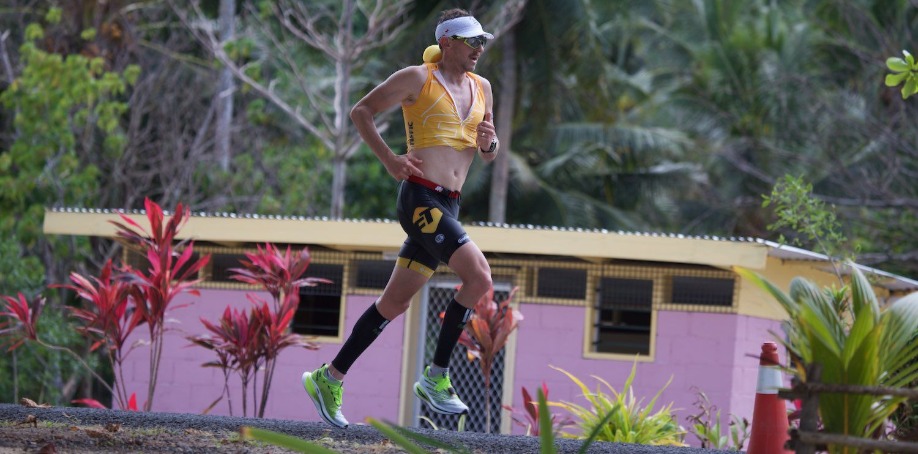Mastering Training and Racing in Hot & Humid Climates: A Guide for Triathletes
Race Preparation, August 05, 2023
In the scorching realm of hot and humid challenges, triathletes need a calculated strategy. Gradual heat acclimation, precise hydration, optimal pacing, and innovative cooling techniques become crucial allies. Listen keenly to your body's cues, prioritize recovery, and transform adversity into a path to athletic mastery. 🏆🔥
When the mercury rises and humidity sets in, the true test of a triathlete's mettle begins. Navigating hot and humid conditions requires a strategic approach. This week I’ve been at a Training Camp in Samoa helping some athletes prepare for their IRONMAN World Championships race in Hawaii. It’s been amazing watching the athletes confidence grow as they knock off training sessions in very difficult conditions. In the Half Iron Distance race we took part in during the camp I was amazed how well I had adapted to the conditions leading into it. During the race we were given cold sponges and cold water at the aid stations, to help us deal with the heat, and it was interesting to see how the perceived effort dropped once the core body temperature was maintainted to a good level. There was no significant drop in pace as the race went on, despite having been training through a New Zealand winter leading up to it.

Here's my guide to not only endure but excel when training and racing in scorching environments:=
1. Optimal Hydration Strategy: 💧
Hydration is paramount, yet a delicate balance must be maintained. Properly hydrate before sessions or races with electrolyte-infused fluids, steering clear of the risk of overhydration. It's a science of equilibrium – enough to quench the thirst, not excess. Also be aware that the hotter it is, the harder our bodies work, so you need to take on enough calories to manage this. Fueling in the heat is a real challenge, and something you need to train for.
2. Embrace Acclimation Techniques: 🌡️
Heat acclimation is your training companion. Gradual exposure readies your body for elevated temperatures, boosting your heat management prowess. This process is akin to sculpting your body into a heat-resilient masterpiece, paying dividends during race day. Here’s an article I wrote on this topic a while back. Leading into this Training Camp I was increasing my heat exposure by riding on the indoor trainer with the fan off, on easy aerobic rides in the weeks before, and I felt this worked really well for me.
3. Precision Dressing for Performance: 👚🩲
Selecting performance attire tailored for the heat is an art. Breathable fabrics, moisture-wicking properties, and sun protection are the trifecta. A thoughtful choice of clothing facilitates natural cooling, ensuring comfort and peak performance.
4. Strategic Pacing and Adaptation: 🏃♂️
Master the art of pacing in hot and humid climates. Recognize the increased effort required at the same intensity. Start conservatively, allowing your body to acclimate. Employ a measured approach, capitalizing on strategic pacing for a triumphant finish. I always keep an eye on my Heart Rate, and aim to keep it a few beats lower than I would see on a cooler day. There will be a drop in pace or power though, but you will find that as the session or race goes on you’re able to maintain the effort for longer, or even lift in the closing stages of the race. This is much preferred to going too hard and fading as you go on, and risking not even finishing the race.
5. Innovative Cooling Strategies: ❄️
Combat the heat with ingenuity. Pouring water over your body mid-race simulates a refreshing breeze, a cold sponge works wonders. Pouring cold water over your skin helps a lot. You will see some weird and wonderful inventions that people use, such as neckties, headbands, gloves, arm sleeves, all as a way to hold cold water or ice and manage thermal regulation. These tactical cooling methods grant a competitive edge under the sweltering sun.
6. Body's Communication: Listen Intently: 🙉
Deciphering your body's language is vital. Muscle cramps, dizziness, and nausea signal overheating. A prudent athlete heeds these cues, adapting pace or pausing for recovery. Prioritizing well-being showcases prowess beyond physicality. A well placed easing in effort, or a walk break may save you from not finishing at all. So listen to your body, keep an eye on your Heart Rate or Core Body Temperature Monitor if you use one of these devices.
7. Post-Race Recovery: Nurturing the Body: 🛌💤
Triumph requires holistic recovery. Rehydration with electrolyte-rich fluids, nutrient replenishment, and gentle cooldown routines are pivotal. Quality rest rejuvenates fatigued muscles, ensuring a swift rebound for future triumphs. Try to get out of the sun as soon as you can, get some cool fluids into you and get out of your sweaty workout or race kit as soon as you can.
7. To Aircon or not to Aircon:
I get asked this a lot actually. There's a school of thought to say you should not use the airconditioning in your race accomodation in the days leading into the event, or on a Training Camp for that matter. I'm a firm believer that when you are at your accomodation (either chilling after training or when sleeping at night) you should keep the aircon on. Sleep is the time you need to recover, and not having a nice environment in your room won't allow you to sleep well. The adatpation to the heat is done when training, that's enough for what you need to prepare for. Crank the aircon and sleep well.
Use this guide to help you conquer the challenges of hot and humid conditions. Transform adversity into an opportunity for athletic mastery. As the temperature soars, your prowess shall ascend even higher. 🏆🔥
#TriathlonHeatMastery #AthleteInAdversity

